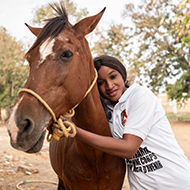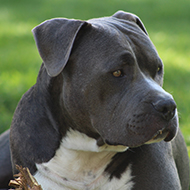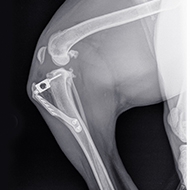“It has been common practice to automatically suspect a cat with Diabetes Mellitus to be suffering from a form of diabetes akin to human type 2."
One in four cases caused by hypersomatotropism
One in four cases of Diabetes Mellitus in cats are caused by excess secretion of pituitary growth hormone, according to research by the RVC.
The findings, published in PLOS ONE, reveal that this is much more common than previously thought, and cats with this condition can be easily misdiagnosed as having primary (type 2) diabetes.
Researchers collected data between 2003 and 2011 on over 1200 diabetic cats treated at veterinary practices across the UK.
They found that the presence of diabetes in one in four cats can be explained by hypersomatotropism - a state caused by a pituitary benign tumour which can be effectively treated by one operation in specialist centres.
However, just 24 per cent of clinicians who submitted samples suspected this was the case, as most hypersomatotropism cats did not display typical signs. Instead, they displayed symptoms indistinguishable from cats with primary (type 2) diabetes.
The RVC say this suggests that hypersomatotropism screening should be considered when treating diabetic cats. Lead researcher Dr Stijn Niessen, explains:
“It has been common practice to automatically suspect a cat with Diabetes Mellitus to be suffering from a form of diabetes akin to human type 2.
"The current study suggests that this is an oversimplification. Approximately one in four of assessed diabetic cats were actually found to be suffering from hypersomatotropism-induced Diabetes Mellitus, which requires specific treatment and manifests itself very differently as it develops."
“Interestingly, only a small proportion of clinicians reported they strongly suspected acromegaly to be present on the basis of the clinical picture. These data therefore highlight the need for veterinarians working with the spontaneously diabetic cat to consider routinely screening for the presence of hypersomatotropism-induced Diabetes Mellitus, given the significant clinical consequences of its presence.
“Should the hypersomatotropism be diagnosed and treated with one operation, most cats will enter a state of diabetic remission. If it remains undiagnosed, diabetic cats tend to be difficult to regulate glycaemically which often results in euthanasia, or in the long-term, they will suffer from other growth hormone-induced negative conditions such as heart disease, as well as central nervous system problems.”







 Birmingham Dogs Home has issued an urgent winter appeal as it faces more challenges over the Christmas period.
Birmingham Dogs Home has issued an urgent winter appeal as it faces more challenges over the Christmas period.
